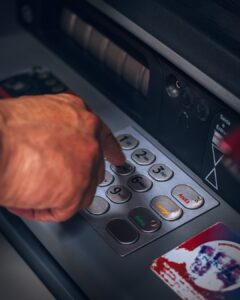Top 5 Must-Have Indicators for Successful Forex Trading
Forex trading is a highly dynamic and volatile market that requires traders to make quick decisions based on various factors. To stay ahead in this competitive market, it is essential to have the right set of tools and indicators at your disposal. In this article, we will discuss the top five must-have indicators for successful forex trading.
1. Moving Average (MA):
The moving average is one of the most basic and widely used indicators in forex trading. It helps traders identify the trend direction and potential entry and exit points. The MA calculates the average price of a currency pair over a specific period, smoothing out the price fluctuations. Traders often use two moving averages, one short-term (e.g., 20-day MA) and one long-term (e.g., 50-day MA), to identify trend reversals and confirm the overall trend.
2. Relative Strength Index (RSI):
The Relative Strength Index is a momentum oscillator that measures the speed and change of price movements. It oscillates between 0 and 100, with readings above 70 indicating overbought conditions and readings below 30 indicating oversold conditions. Traders use the RSI to identify potential trend reversals and generate buy or sell signals. It is important to note that the RSI should not be used in isolation but rather in conjunction with other indicators to confirm trading decisions.
3. Bollinger Bands:
Bollinger Bands are volatility indicators that consist of a moving average and two standard deviation lines. The upper band represents the overbought zone, while the lower band represents the oversold zone. When the price touches or crosses the upper band, it may indicate a potential reversal or a continuation of an uptrend. Conversely, when the price touches or crosses the lower band, it may indicate a potential reversal or a continuation of a downtrend. Traders use Bollinger Bands to identify potential entry and exit points and to gauge the volatility of a currency pair.
4. Fibonacci Retracement:
Fibonacci retracement is a technical analysis tool that helps traders identify potential support and resistance levels based on the Fibonacci sequence. The Fibonacci retracement levels are 23.6%, 38.2%, 50%, 61.8%, and 78.6%. These levels act as potential turning points for price movements. Traders use Fibonacci retracement to determine potential entry and exit points and to set stop-loss and take-profit levels. It is important to note that Fibonacci retracement should be used in conjunction with other indicators and tools for confirmation.
5. MACD (Moving Average Convergence Divergence):
The MACD is a trend-following momentum indicator that consists of two lines, the MACD line and the signal line, as well as a histogram. The MACD line is calculated by subtracting the 26-day exponential moving average (EMA) from the 12-day EMA. The signal line is a 9-day EMA of the MACD line. The histogram represents the difference between the MACD line and the signal line. Traders use the MACD to identify potential trend reversals, generate buy or sell signals, and confirm the strength of a trend. When the MACD line crosses above the signal line, it generates a bullish signal, and when it crosses below the signal line, it generates a bearish signal.
In conclusion, successful forex trading requires the use of various indicators to analyze price movements, identify trends, and generate buy or sell signals. The five indicators discussed in this article, namely Moving Average, Relative Strength Index, Bollinger Bands, Fibonacci Retracement, and MACD, are essential tools that every forex trader should have in their toolbox. However, it is important to note that indicators should not be used in isolation but rather in conjunction with other indicators and tools to increase the probability of successful trades.





